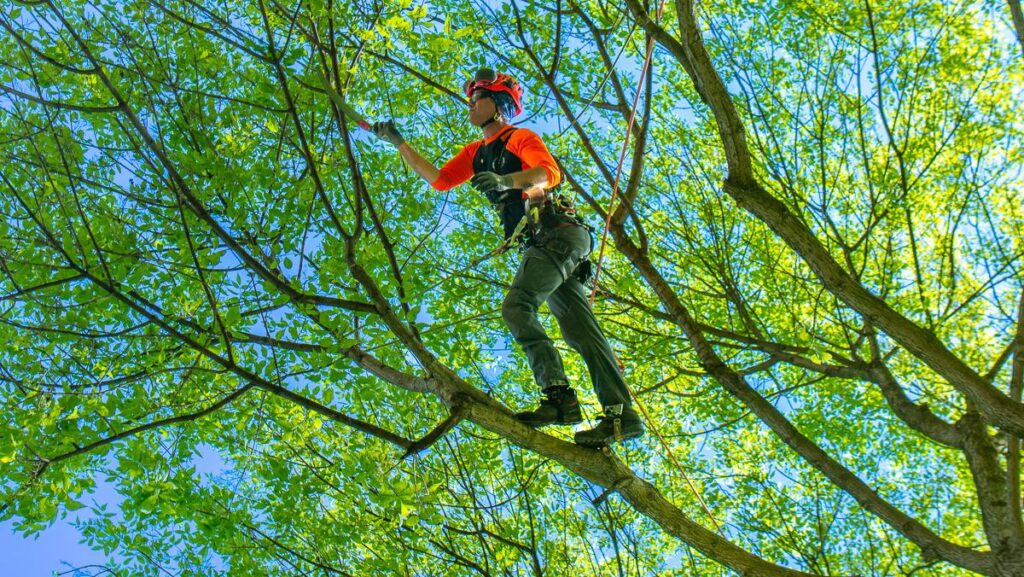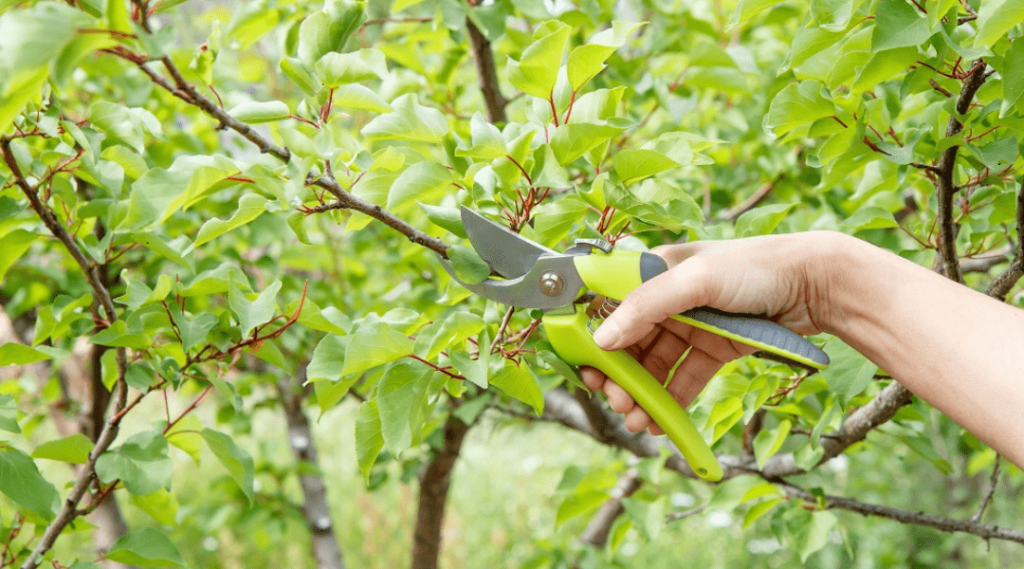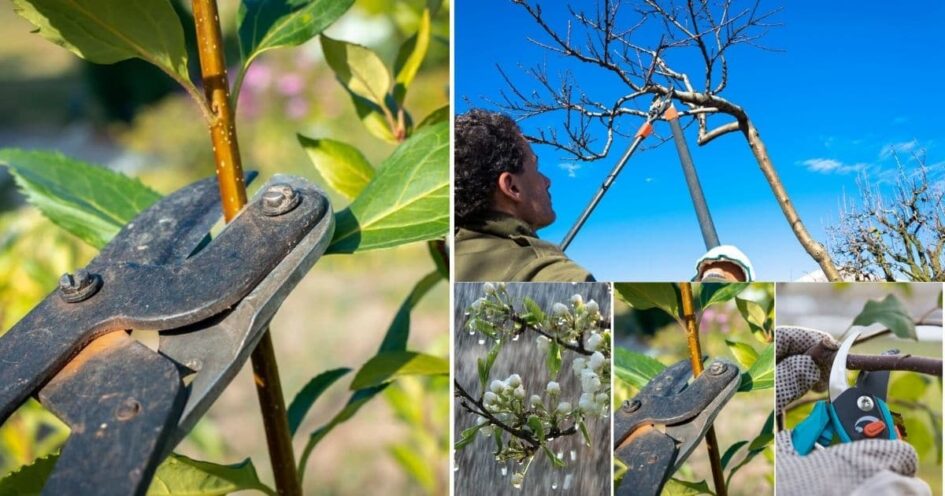Tree pruning is an essential part of tree maintenance that helps promote healthy growth and maintain the overall aesthetics of your landscape. However, homeowners are often uncertain about the cost associated with this service. In this article, we will delve into the various factors that influence tree pruning cost and provide insights to help you understand what to expect when hiring professional tree pruning services.
The Basics of Tree Pruning
Before we discuss the cost implications, let’s first understand what tree pruning entails. Tree pruning cost is the process of selectively trimming tree branches to enhance their health, aesthetics, and structural integrity. By removing dead, damaged, or diseased branches, we can improve the tree’s overall appearance and reduce the risk of falling limbs.
What is Tree Pruning?
Tree pruning involves the careful removal of specific branches to improve their growth and shape. The goal is to maintain the tree’s natural form and enhance its overall health.
Why is Tree Pruning Necessary?
Regular tree pruning offers several benefits. It helps eliminate weak or diseased branches that may pose a hazard. Additionally, pruning improves air circulation and sunlight penetration, thereby enhancing the tree’s ability to photosynthesize and thrive. A well-pruned tree is also less susceptible to pests and diseases.
Furthermore, tree pruning can also promote fruit production in fruit-bearing trees. By selectively removing certain branches, the tree’s energy is redirected to the remaining branches, resulting in larger and healthier fruits. Proper pruning techniques can maximize the yield of fruit trees and ensure a bountiful harvest each season.
Another important aspect of tree pruning is shaping the tree for aesthetic purposes. Trimming branches in a strategic manner can enhance the visual appeal of the tree, creating a more pleasing landscape. Professional arborists often use pruning techniques to sculpt trees into desired shapes or forms, adding beauty and character to outdoor spaces.
Factors Influencing Tree Pruning Cost
Now that we understand the importance of tree pruning, let’s explore the factors that play a role in determining the cost of this service.
Tree pruning is a crucial aspect of maintaining the health and aesthetics of your landscape. Beyond just enhancing the visual appeal of your property, proper pruning promotes tree growth, reduces the risk of disease, and ensures the safety of your surroundings. Understanding the various factors that influence tree pruning costs can help you make informed decisions when it comes to caring for your trees.
Size and Number of Trees
The size and number of trees to be pruned significantly impact the overall cost. Larger trees require more time, effort, and specialized equipment to complete the pruning process successfully. Additionally, if you have multiple trees that require pruning, the cost may increase due to the additional labor involved.
Professional arborists assess the size of the tree canopy, the height of the tree, and the thickness of branches to determine the extent of pruning required. Trees with extensive canopy coverage or overgrown branches may require more intricate pruning techniques, leading to higher costs.
Tree Species and Health
Different tree species have varying pruning requirements, and their overall health can influence the complexity of the job. Trees with dense growth patterns or weaker structures may require more careful and intricate pruning techniques, thus increasing the cost.
Furthermore, the health condition of the tree plays a crucial role in determining the pruning cost. Diseased or pest-infested trees may require specialized treatment and pruning methods to mitigate the issue effectively. Arborists may need to take extra precautions to prevent the spread of diseases, which can add to the overall cost of the pruning service.
Location and Accessibility
Another essential factor is the accessibility of the tree. If the tree is located in a challenging position or requires special equipment for reaching it, the cost may be higher. Trees that are close to buildings, power lines, or other structures may require additional precautions, further impacting the price.

Arborists often consider the proximity of the tree to obstacles or structures that may hinder the pruning process. Trees located in confined spaces or areas with limited access may require specialized equipment such as cranes or bucket trucks, adding to the overall cost of the service. Additionally, factors such as terrain unevenness or obstacles in the surrounding area can affect the ease of access for the arborists, influencing the final pricing of the tree pruning service.
Average Cost of Tree Pruning Services
While tree pruning costs can vary significantly depending on the factors mentioned above, it is helpful to have a general understanding of the average expenses associated with this service.
Tree pruning is a crucial aspect of tree maintenance that not only enhances the aesthetic appeal of your landscape but also promotes the health and longevity of your trees. Professional tree pruning services involve the skillful removal of dead or overgrown branches, shaping the tree for better growth, and ensuring structural integrity to withstand harsh weather conditions.
Local vs. National Average Costs
The cost of tree pruning services can vary from region to region. Factors such as local market rates, competition, and the availability of arborists influence the pricing. On a national average, homeowners can expect to spend around $400 to $600 per tree for professional tree pruning.
In urban areas where the demand for tree care services is high, the average cost of tree pruning may be slightly higher due to increased competition among arborists. Conversely, in rural areas with fewer tree care professionals, the prices may be more competitive but could also reflect the expertise and equipment available.
Hourly Rates vs. Flat Fees
Tree pruning services may be offered on an hourly basis or as a flat fee. Hourly rates are commonly used for small-scale jobs or when pruning a single tree. On the other hand, flat fees are often charged for larger projects or when pruning multiple trees within a property.
When determining whether to opt for hourly rates or flat fees, consider the size and number of trees requiring pruning, as well as the complexity of the job. For extensive tree pruning projects that involve multiple trees or require specialized techniques, a flat fee may provide more cost-effective pricing and peace of mind regarding the total expenses.
Additional Costs to Consider
In addition to the primary pruning service, there are a few other costs that homeowners should be aware of.
Emergency Tree Pruning
In cases of storm damage or hazardous situations, emergency tree pruning may be required. It is crucial to address immediate risks to prevent further property damage or personal injury. Emergency tree pruning services usually come at a higher cost due to the urgency and additional planning involved.
When a tree is damaged during a storm, it can pose a significant threat to the surrounding area. Emergency tree pruning not only involves the removal of damaged branches but also the assessment of the tree’s overall health to ensure its stability. Arborists may need to work quickly and efficiently to mitigate any potential dangers, which can contribute to the higher cost of emergency services.
Disposal of Tree Waste
After pruning, there will be a considerable amount of tree waste to dispose of, including branches, leaves, and other debris. Some companies include waste removal in their pricing, while others may charge an additional fee for disposal. It’s essential to clarify this aspect when discussing the quote with the service provider.

Proper disposal of tree waste is not only crucial for maintaining a clean and tidy landscape but also for environmental reasons. Many tree care companies have specific protocols for recycling or composting tree waste to minimize their impact on landfills. Understanding how your chosen service provider handles tree waste disposal can give you insight into their commitment to sustainability and responsible environmental practices.
How to Save on Tree Pruning Costs
While professional tree pruning comes at a price, there are ways to minimize the expenses without compromising on the quality of the service.
Tree pruning is a crucial aspect of tree care that promotes healthy growth, improves aesthetics, and reduces the risk of disease and pest infestations. Proper pruning techniques involve removing dead or diseased branches, shaping the tree for optimal growth, and enhancing its structural integrity.
Seasonal Discounts and Offers
Many tree pruning companies offer seasonal discounts or special offers during slower months. By scheduling your pruning during these periods, you may be able to take advantage of lower prices without compromising on the quality of the work.
Additionally, some companies may offer bundled services, such as tree pruning combined with tree inspection or fertilization, at a discounted rate. Taking advantage of these package deals can help you save on overall tree care costs while ensuring comprehensive maintenance for your trees.
DIY Tree Pruning: Pros and Cons
Some homeowners may consider pruning their trees themselves to save money. However, it is important to note that tree pruning requires a certain level of expertise and knowledge to ensure the health and safety of the tree. Improper pruning techniques can cause long-term damage or even lead to tree death. If you choose to go the DIY route, make sure to educate yourself thoroughly and follow best practices.
Before embarking on a DIY tree pruning project, consider the tools and equipment required for the job. Sharp and properly maintained pruning tools, such as hand pruners, loppers, and pruning saws, are essential for clean and precise cuts that promote tree healing. Safety gear, such as gloves, safety glasses, and sturdy footwear, is also crucial to protect yourself from potential injuries.
In conclusion, understanding the factors influencing tree pruning costs and knowing what to expect can help homeowners plan and budget for this essential service. By considering the size and number of trees, tree species and health, location and accessibility, as well as additional costs, homeowners can make informed decisions and ensure the health and beauty of their trees for years to come.
Related: Choosing tree pruning services near me for optimal care.

Leave a Reply